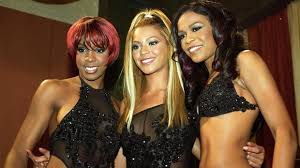
During the 1940s, the term R&B was coined after World War II (Henry, 2018). Although the music genre itself was not new in the culture, this term became popularized because the original term (race music) was viewed as problematic. This caused the switch in the name to become more inclusive. However, while the name was changing, the way Black musicians were viewing R&B was changing also.
Before World War II, R&B was considered Black religious music and jazz. However, artists at the time such as Nat King Cole and Duke Ellington were starting to experiment and shift their sound. Instrumentalists started to be more creative with their instruments like their brass or saxaphones and started to use more explicit content in their lyrics (Henry, 2018).
50s, 60s, and 70s… What a time!
R&B has always experienced constant shifts during each decade. After the reformation of R&B in the 1940s, Rhythm and Blues once again changed it sound. Once the instrumental rifts and jumps occured within the 1940s and got coined as the “jumping blues”, the sound started to evolve into blues and what we now know as rock and roll in the 1950s (Henry, 2018). The person that is most notorious for this shift is Little Richard who inspired many funk and rock and roll artists like James Brown and Elvis Presley (Henry, 2017).
In the 1960s and 1970s, the rise of funk, disco, and soul also became prevalent and was used under the umbrella term of R&B. Vocal groups and more vocalizations became more apparent within the 1960s. However, in the 1970s, a distinct style of instruments were used to make music more interesting and creative. Some of these instruments include synthesizers, pianos, eletric rhythm guitars, and syncopated basslines (Henry, 2018). This era of music gave way to modern R&B artists like Michael Jackson (Henry, 2018).

R&B Decline?
Within the 1980s and 90s, R&B started to decline due to the rising popularity of Hip Hop. It became increasingly more difficult to sell R&B records. Therefore, record labels and artists opted for a hip hop style of R&B (Henry, 2018). This lead to the rise of groups and artists such as Bell Biv Devoe, Sade, and New Edition in the late 80s and during the 90s. 1990 R&B started to bring back a trend of soul while also reforming into the hip hop style which eventually became neo-soul. Some important people within the neo-soul movement include Erykah Badu and Lauryn HIll
Current R&B
Post-1990s, R&B is the amalgamation of all the musical genres Black musicians have created over the years packed into one genre. However, the main influences of R&B within the early 2000s still used the sounds hip hop and R&B mixed together (Henry, 2018). In the 2010s,r&b is now combined with the technical styles which drew from the earlier music genre of funk. Some of the current R&B artists include H.E.R and Ro James.

Overall, R&B has proven itself to be durable for more than 50 years. It has constantly shift and reformed to fit the music that Black artists and audiences found enjoyable. It also shows that R&B constantly recycles its sound to be more adaptive for the time.
Henry, S. (2018). The Evolution of R&B. TUC,
http://tucmag.net/music/the-evolution-of-rb/

